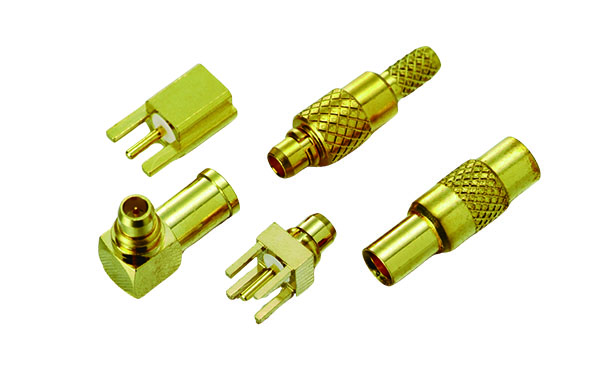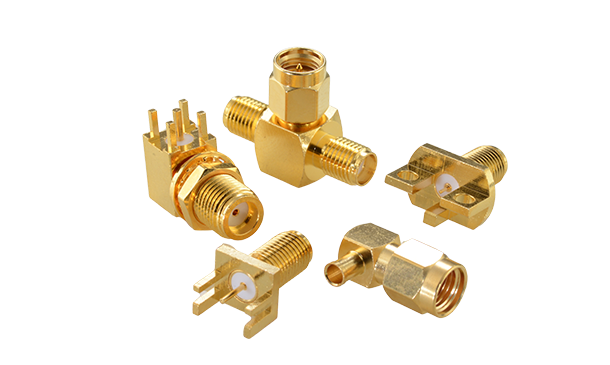- HOME
- Applications
- Blog
- RF Coaxial Connector: A Key Component for Optimizing Microwave Communications
RF Coaxial Connector: A Key Component for Optimizing Microwave Communications
25-02-24In modern wireless communication technology, the effective transmission of radio frequency (RF) signals is the basis for the stable operation of various systems, in the RF system, RF coaxial connectors play a vital role. RF coaxial connectors, as a specially designed to connect the RF cables and equipment components, which help microwave communication process signal transmission stability, is an indispensable component of the high frequency signal transmission, is crucial to the development of It is an indispensable component for the transmission of high frequency signals, which is crucial for the development of wireless communications, satellite systems, radar systems, test instruments and other fields. In this article, we will introduce the types, specifications and applications of RF coaxial connector to provide the best solution.
What is RF Coaxial Connector?
An RF coaxial connector is a connector designed to connect an RF signal source to a receiving device, a component of a transmission system that is responsible for connecting or disconnecting the system, and consists primarily of a pair of mating male (plug) connectors and female (jack) connectors. RF coaxial connectors are usually used in conjunction with coaxial cables to ensure efficient signal transmission and minimize reflection loss.
< Extended reading: What are RF Connectors? >
RF Coaxial Connectors Transmit High Frequency Signals
RF coaxial connectors transmit signals through a center conductor (which transmits the signal) and an outer shielding conductor (which shields against interference). The signal travels along the center conductor and is surrounded by an external metal shield, which effectively prevents external interference and ensures the stability of the internal signal transmission.
< Extended reading: What is Coaxial Cable and Characteristics >
< Extended reading: What is high frequency? High Frequency Features and Applications! >
RF Coaxial Connector Internal Structure Design Considerations
RF coaxial connectors must be designed to ensure that the internal impedance matches the impedance of the transmission line so that signal reflection and loss can be avoided. RF coaxial connectors are designed to achieve an exact impedance match (typically 50Ω or 75Ω) to minimize signal reflection and maintain low loss during transmission. In microwave communications, RF coaxial connectors must have extremely low insertion and reflection losses due to the nature of high frequency signals. Therefore, the material and design of the connector also need to have good high-frequency resistance.
< Extended reading: Understanding Hermetic Sealing Technology and Hermetic Connectors in RF Applications >
What Are the Specifications of RF Coaxial Connector?
RF coaxial connector specifications include such points as frequency range, impedance, and power handling capability.
- Frequency range and impedance are listed in the following table.
Comparison of RF Connector Series
|
Series |
Frequency Range |
Impedance |
|---|---|---|
|
SMA |
DC - 18 GHz DC - 27 GHz |
50ohm |
|
MCX |
DC - 6 GHz | 50ohm/75ohm |
|
MMCX |
DC - 6 GHz | 50ohm |
|
N |
DC - 18 GHz | 50ohm/75ohm |
|
SMB |
DC - 4 GHz | 50ohm/75ohm |
|
SMP |
DC - 40 GHz | 50ohm |
|
SSMP |
DC - 65 GHz | 50ohm |
|
BNC |
DC - 4 GHz | 50ohm/75ohm |
|
TNC |
DC - 18 GHz | 50ohm/75ohm |
|
BMA |
DC - 22 GHz | 50ohm |
|
3.5 mm |
DC - 34 GHz | 50ohm |
|
2.92 mm |
DC - 40 GHz | 50ohm |
|
2.4 mm |
DC - 50 GHz | 50ohm |
|
1.85 mm |
DC - 67 GHz | 50ohm |
- Power handling capacity: Refer to the following correspondences.
< Extended reading: SSMP Adapters: Key Functions, Types, Advantages, and Applications >
< Extended reading: SMP Spring Loaded Adapter >
< Extended reading: SMA Connectors - The Most Common RF Connectors >
< Extended reading: 5 Minute Guide to Understanding the Uses and Applications of SMA Adapters >
What Are the Types of RF Coaxial Connector?
Introduces the basic appearance identification, connection methods/types, and corresponding applications for each series of RF coaxial connector.
Type table of RF coaxial connectors
|
Series |
Features |
Mounting Type |
Applications |
|---|---|---|---|
|
SMA |
Female: Thread Male: Coupling Nut With 1/4-36 UNS-2A/2B screw threads |
Threaded Connection (Screw-on Coupling) |
|
|
MCX |
Male: With six slot | Snap on Coupling |
|
|
MMCX |
Male: Looks like a miniature C-clip and is smaller than MCX. | Snap on Coupling |
|
|
N |
Female: Thread | Threaded Connection (Screw-on Coupling) |
Antenna |
|
SMP |
Female: With four slot. | Snap on Coupling | Organizational Connections |
|
SSMP |
Straight Plug Type | Snap on Coupling | Short-wave national defense system |
|
TNC |
Female: Thread Male: Coupling Nut With 5/8-24 UNEF-2A/2B screw threads |
Threaded Connection (Screw-on Coupling) |
|
|
BMA |
Female: Spring Fingers Male: O-Ring |
Slide on Coupling |
|
|
3.5 mm |
With 1/4-36 UNS-2A/2B screw threads | Threaded Connection (Screw-on Coupling) |
|
|
2.92 mm |
With 1/4-36 UNS-2A/2B screw threads | Threaded Connection (Screw-on Coupling) |
|
|
2.4 mm |
With M7x0.75 screw threads | Threaded Connection (Screw-on Coupling) |
Can be used for precision instruments and other laboratory applications |
|
1.85 mm |
With M7x0.75 screw threads | Threaded Connection (Screw-on Coupling) |
|
< Extended reading: 2.92mm Adapter >
< Extended reading: 2.92mm Connectors -The High Frequency Applications for Microwave Field >
< Extended reading: SSMP Connectors: Specifications, Advantages, and Types >
< Extended reading: Explore BMA Connectors and Applications in Microwave Technology >
RF Coaxial Connector Applications
Microwave communication technology is widely used in wireless communication, satellite communication, radar system, satellite positioning, measurement instruments and other fields. In these applications, the selection and performance of RF coaxial connectors directly affect the efficiency and stability of the system.
< Extended reading: How to Choose RF Blind Mating Connectors? >
Wireless Communications
RF coaxial connectors play a vital role in wireless communication technologies (e.g. Wi-Fi, 5G, LTE, etc.) that require high spectrum utilization and signal quality. Whether it is a cell phone base station, antenna system, or high frequency test equipment. RF connectors ensure stable signal transmission between devices, reduce signal loss and reflection also realize efficient wireless transmission.
Satellite Communications
In satellite communications, RF coaxial connectors are used to connect satellite antennas, transponders and receiving equipment to ensure efficient transmission of microwave signals. Since the frequency band of satellite communication is usually in the microwave range (e.g., C-band, Ku-band), the requirements for transmission quality are extremely high. At this time, the stability and low loss characteristics of RF coaxial connectors are particularly important.
Radar System
Radar systems usually operate in the high frequency band, which requires high signal accuracy. RF coaxial connectors not only provide stable signal transmission, but also effectively resist the influence of the external environment, such as vibration, temperature change, etc. Its reliability is crucial to the performance of the radar system. Its reliability is crucial to the performance of the radar system.
Measuring Instruments
RF measurement instruments (e.g. oscilloscopes, spectrum analyzers, etc.) rely on accurate signal transmission for measurement and analysis. RF coaxial connectors are quite important standing in these instruments to ensure that the signal is transmitted without excessive attenuation or distortion.
Applications of RF coaxial connectors
|
Series |
Applications |
Series |
Applications |
|---|---|---|---|
|
SMA |
|
TNC |
|
|
MCX |
|
BMA |
|
|
MMCX |
|
3.5 mm |
|
|
N |
|
2.92 mm |
|
|
SMP |
|
2.4 mm |
|
|
SSMP |
|
1.85 mm |
|
< Extended reading: RF Cables Major Characteristics, Applications and Key Points for Selection >
What Are the Key points for Purchasing RF Coaxial Connector?
In microwave communication systems, choosing the right RF coaxial connector is crucial. Factors such as frequency range, impedance matching, mechanical strength and reliability, insertion loss and return loss are often considered when purchasing RF coaxial connectors. Below is an explanation of some of the key selection factors:
Frequency Range
Different RF coaxial connectors support different frequency ranges. It is important to select the RF coaxial connector that supports the desired frequency range according to the application requirements. For example, SMA connectors support frequencies up to 18 GHz and are suitable for high-frequency measurements and wireless communications, while N type connectors are suitable for lower frequency bands (up to 11 GHz) and can withstand higher power.
Impedance Matching
Impedance matching is a very important aspect of RF systems. Most microwave communication systems use 50ohm impedance to minimize signal reflection and ensure maximum signal transmission efficiency. Therefore, it is important to choose the right impedance (50ohm or 75ohm) for RF coaxial connectors to match the system.
Mechanical Strength and Reliability
Durability and reliability of RF coaxial connectors are especially critical in harsh environments such as military or aerospace. Selecting connectors that are vibration, water, dust and corrosion resistant will ensure that the system works properly in harsh conditions.
Insertion Loss and Return Loss
In microwave communication systems, insertion loss and return loss have a direct effect on signal transmission. The lower insertion loss for lower signal attenuation. The higher return loss for lower reflected signal. Therefore, selecting RF coaxial connectors with low insertion loss and high return loss can help improve system performance.
< Extended reading: Microwave Communication: The Core Technology of Modern Technology and the Key Role of RF Connectors >
< Extended reading: Explore Microwave Frequency and Their Applications in RF Microwave Connectors >
< Extended reading: Microwave Technology Principles and Applications >
Features and Advantages of RF Coaxial Connector
RF Coaxial Connector is mainly used for RF signal transmission, which is widely used in communication, aerospace, military, medical, automotive electronics and other fields. The following are its main features and advantages:
- High Frequency Performance: RF coaxial connectors support frequency ranges from MHz to GHz levels, ensuring low loss and high performance signal transmission.
- Impedance Matching: Usually 50ohm or 75ohm to ensure matching with the system impedance to minimize signal reflection and loss.
- Low Insertion Loss: High quality materials and precision manufacturing processes minimize RF coaxial connector signal attenuation and enhance signal integrity.
- High Shielding Performance: With good electromagnetic shielding ability, can effectively reduce external interference to ensure signal stability.
- Various Interfaces and Specifications: RF coaxial connectors include different interfaces such as BNC, SMA, N, TNC, MCX, MMCX, etc., which are suitable for various applications
- Quick Connect and Disconnect: Some series such as BNC, QMA have quick connect and disconnect design to enhance the convenience of installation.
- Environmental Resistance: High temperature, humidity, vibration, some RF coaxial connectors are waterproof and dustproof, such as IP67 level.
Advantages of Product
- Stable and Reliable Signal: Excellent impedance control and shielding design ensures low noise and high performance signal transmission of RF coaxial connectors.
- High Durability: Use high quality materials (such as with Gold plated, stainless steel with passivated, etc.) to ensure durability and corrosion resistance.
- Wide Range of Applications: RF coaxial connectors are suitable for wireless communication, radar, navigation, test equipment, medical equipment, automotive electronics and other fields.
- Flexible Design: Different installation methods can be provided according to the application requirements, such as flange type, panel type, straight type, curved type and so on.
- Cost Effective: Compared with other high frequency connection technologies, RF coaxial connectors have lower cost and good performance ratio.
Conclusion
RF coaxial connectors have an irreplaceable importance in wireless communications. Huang Liang Technologies is committed to providing low insertion loss and good performance electrical characteristics, which means our RF coaxial connectors can effectively transmit RF signals and ensure high quality signal transmission. RF coaxial connectors are especially important for high frequency applications in 5G, communication equipment, radar systems, satellite receivers, drone communication, high frequency electronic engineering design, laboratory test and measurement, and aerospace industry. No matter what your communication application is, Huang Liang Technologies provides one-stop service including initial design, product simulation, assembly operation and product electrical analysis to provide you the best solution. You can get professional simulation advice before mass production of RF coaxial connectors. It may help you to realize the competitive advantage of signal stability and reduction of signal loss in wireless communication technology. If you would like to know more about our products, please feel free to contact us !
< Extended reading: What is mmWave? Advantages, Disadvantages and Applications! >

 (1).jpg)



